Stranded wire is made from several thin (often copper) strands twisted and bundled together to create a multi-stranded conductor. Read More…
Jersey Strand & Cable, Inc.
JSC, as one of the most diversified wire braid manufacturers, utilizes over 200 production machines to produce top rated wire products in ferrous and nonferrous materials. Industries that JSC serves include electronics, geophysical and communications. Their mission is to continually improve their expertise, capabilities, products and services for current and future worldwide customers.
Phillipsburg, NJ | 800-528-3900
Request for Quote

More Stranded Wire Manufacturers
Stranded Wire Applications
Stranded wires are primarily utilized indoors. Since stranded wire is designed to bend and twist, it has an advantage over solid wire when connecting electrical components in tight or challenging spaces, including circuit boards and electromechanical assembly. In addition, stranded wiring is substantially more resistant to metal fatigue or cracking than single or solid stranded wire conductors because of its inherent mobility.
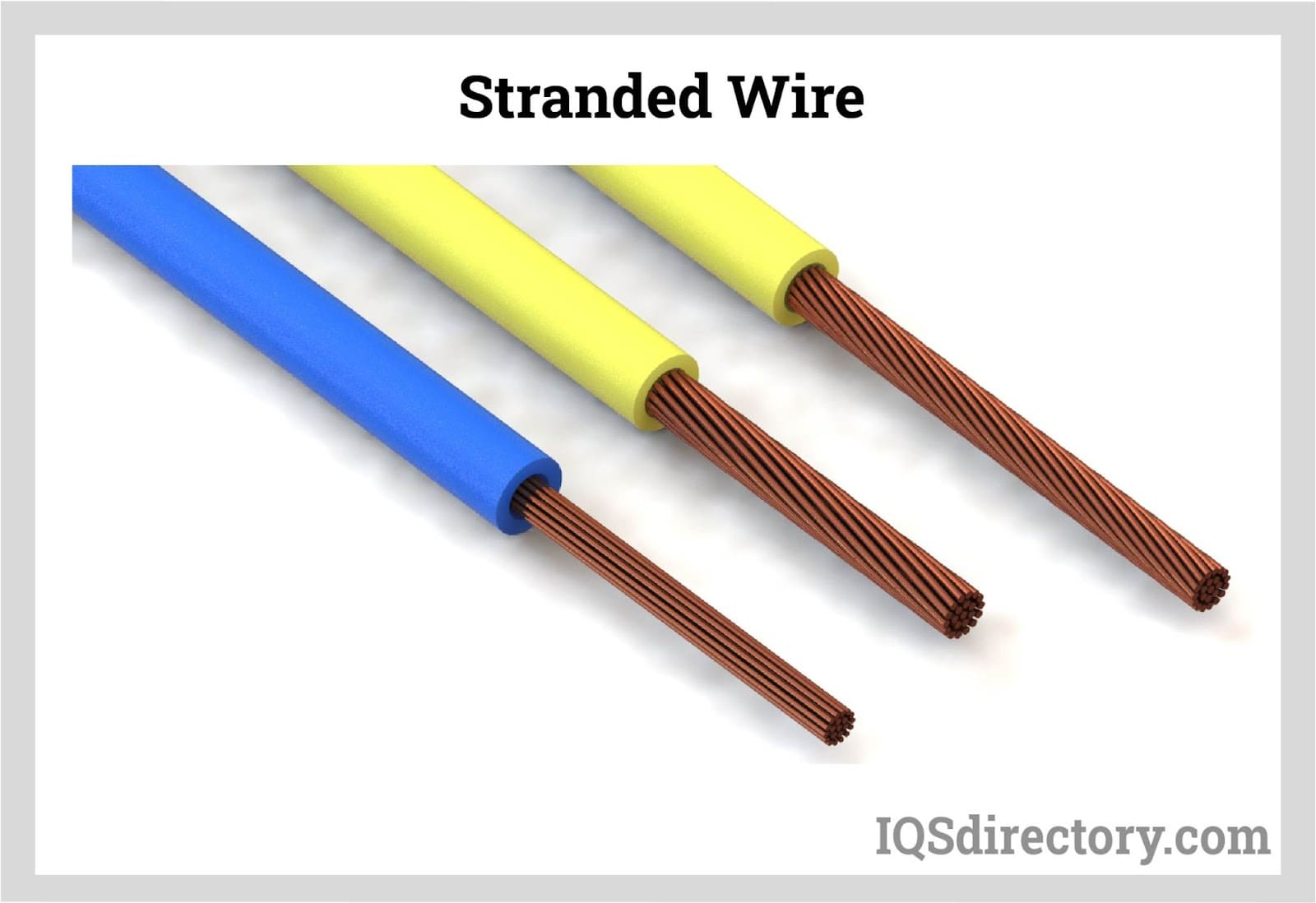
Stranded Wire Types
The bundled wire strands in a stranded wire occur in various patterns to create a single flexible conductor. The bundled strands can be arranged in various geometric ways for each device or application to suit the required design specifications of the customer. The following are a few examples of typical stranded wire configurations that can be set up to enhance the end product.
Concentric Strand
A common wire arrangement, concentrically stranded wire is a conductor that consists of a central wire or core encapsulated by one or more layers of helically laid wires. The conductors are arranged in concentric circles, each layer after the initial one having six more wires than the preceding layer. Concentrically stranded wire arrangements reduce the need for filler material. In addition, the wires can be bunched together tightly to maintain the wire’s shape and help improve conductivity.
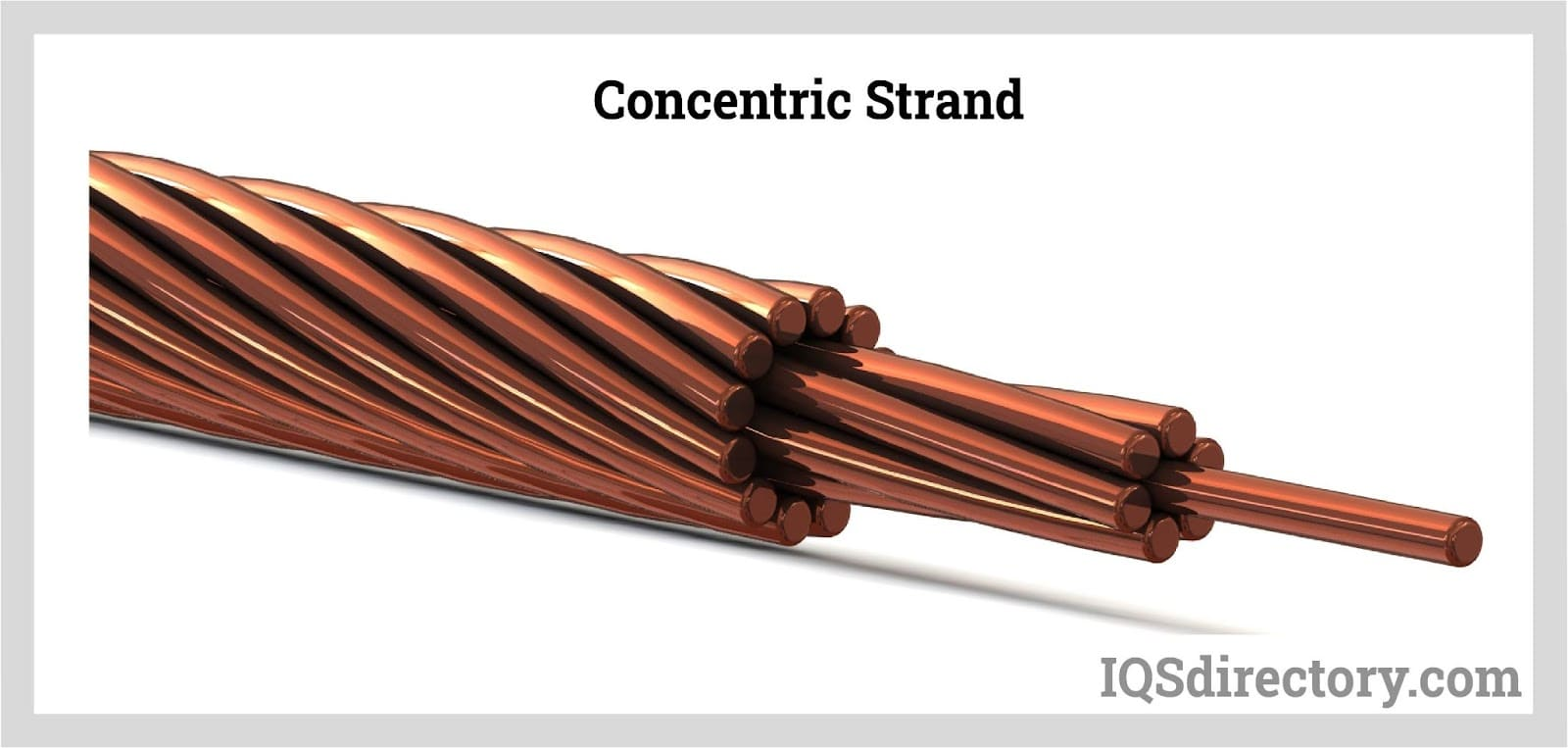
Rope Strand
Using rope stranding, wires are bundled into several small bundles. To create a cable that resembles a rope, each component strand is first stranded and then assembled into concentric rings. The roping increases flexibility. It allows greater mobility in applications that move often or in various directions. Rope strands can also be employed with larger gauge wire, which increases the application’s robustness and functionality.
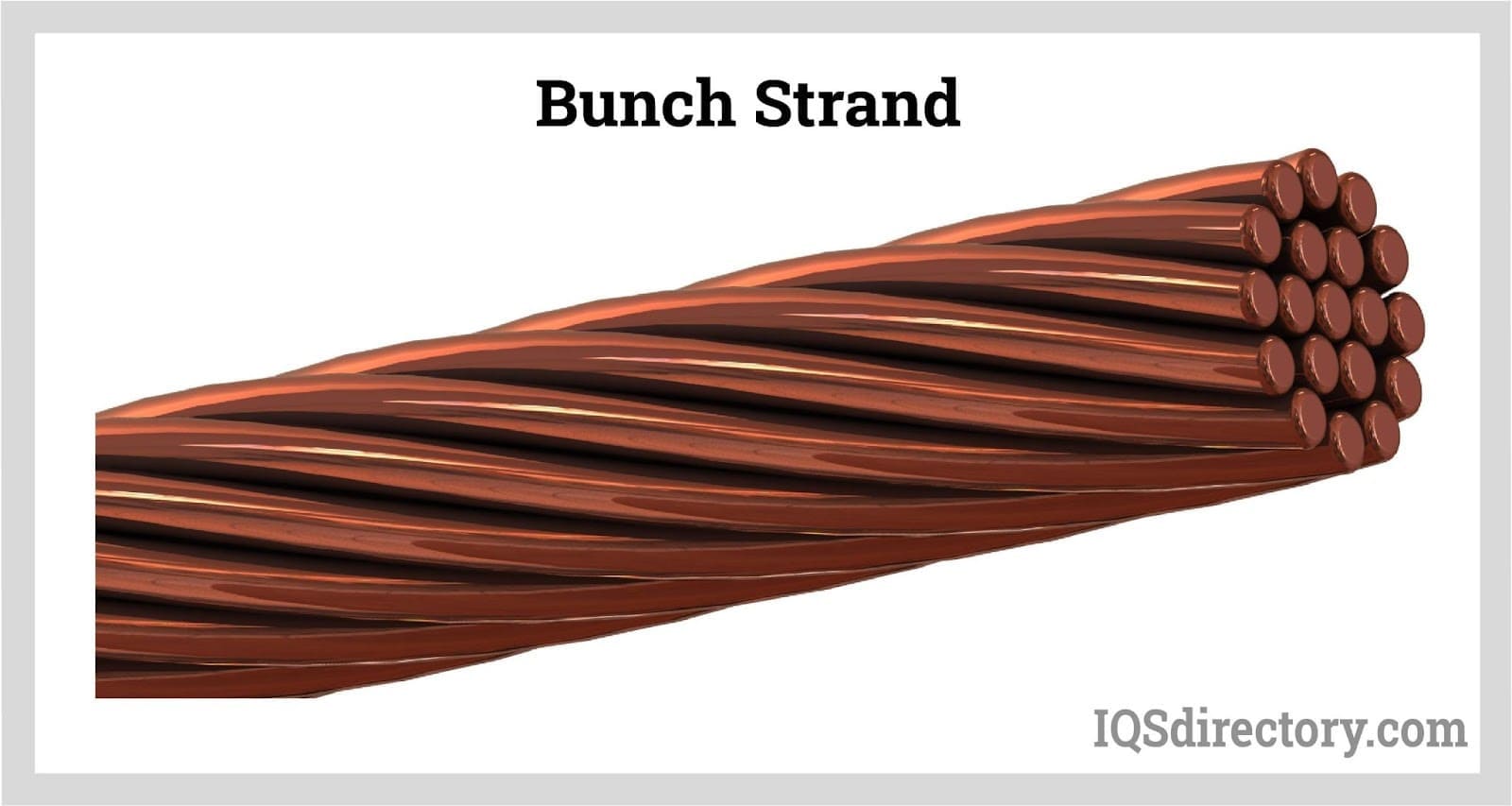
Annular Conductor
Stranded wires are centered around this geometric configuration’s circular, non-conductive central core. Braided sets of strands that may be insulated surround the central core. The braid is coated in the outermost aluminum foil protective covering, which acts as an electrically insulated protective covering. This helps the stranded wire material retain its shape and reduces the wire’s resistance.
Advantages of Stranded Wire
Effective Flexing
The structure of stranded wire makes effective flexing possible. Therefore, these wires come in handy when connecting electrical applications in confined places, and the stranded wire can better tolerate continuous movement. Because of this, businesses employ stranded wires in components like automobile doors and robot arms. In addition to being utilized in circuit boards and inside electronic equipment, stranded wires are also employed to link most domestic electrical applications.
Good for Indoor Use
Stranded cables are the greatest option for indoor use. These wires are strong and flexible. They are a standard component in much indoor electrical equipment as a result, comprising speaker wiring systems and other similar electric uses.
Disadvantages of Stranded Wire
These wires’ physical structures place various restrictions on them.
Not Good for Outdoor Use
Stranded wires feature air gaps between the strands, making them brittle. Strands start to corrode and get damaged when exposed to the weather, impacting the wire’s toughness. Because of this, only solid wires should be used outdoors. Solid wires can withstand severe weather since they are corrosion-resistant due to the thickness of the core.
Poor Load Carrying Capacity
Dissipation frequently occurs with all wires. It is also one of the main obstacles to a wire’s ability to carry a load. When electricity passes through a wire, it encounters a magnetic field, which causes electricity to dissipate into the atmosphere slowly. Dissipation is more likely with a large surface area. A stranded wire has air gaps between the cables and is made up of numerous strands, therefore increasing the surface area. However, a solid wire only uses one strand, greatly reducing the potential surface area for dissipation. Therefore, the solid wire has a higher load-carrying capacity than the stranded wire.
Choosing the Right Stranded Wire Manufacturer
To make sure you have the most productive outcome when purchasing Stranded Wire from a Stranded Wire Manufacturer, it is important to compare at least 5 or 6 Suppliers using our list of Stranded Wire companies. Each Stranded Wire Company has a business profile page that highlights their areas of experience and capabilities and a contact form to directly communicate with the manufacturer for more information or request a quote. Review each Stranded Wire company website using our proprietary website previewer to get an idea of what each company specializes in, and then use our simple RFQ form to contact multiple Stranded Wire businesses with the same message.

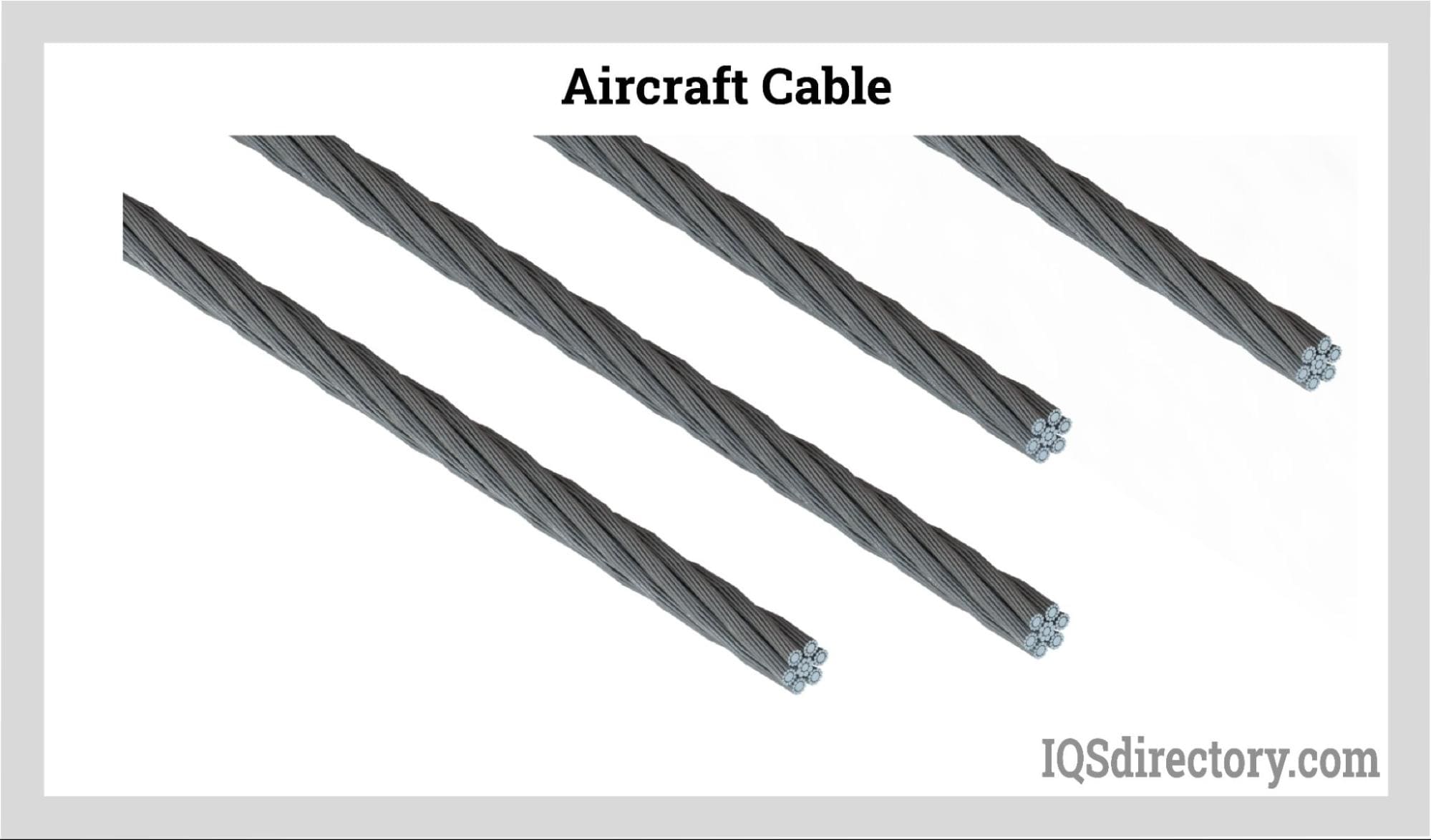
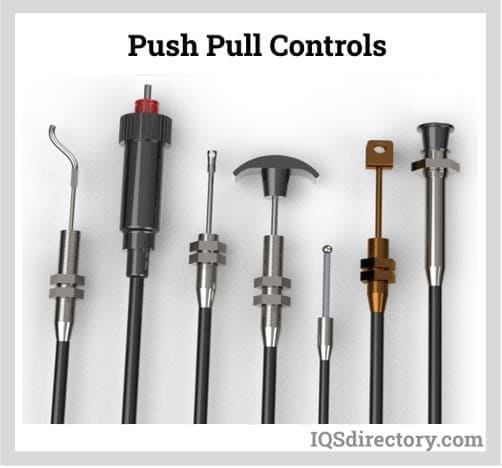
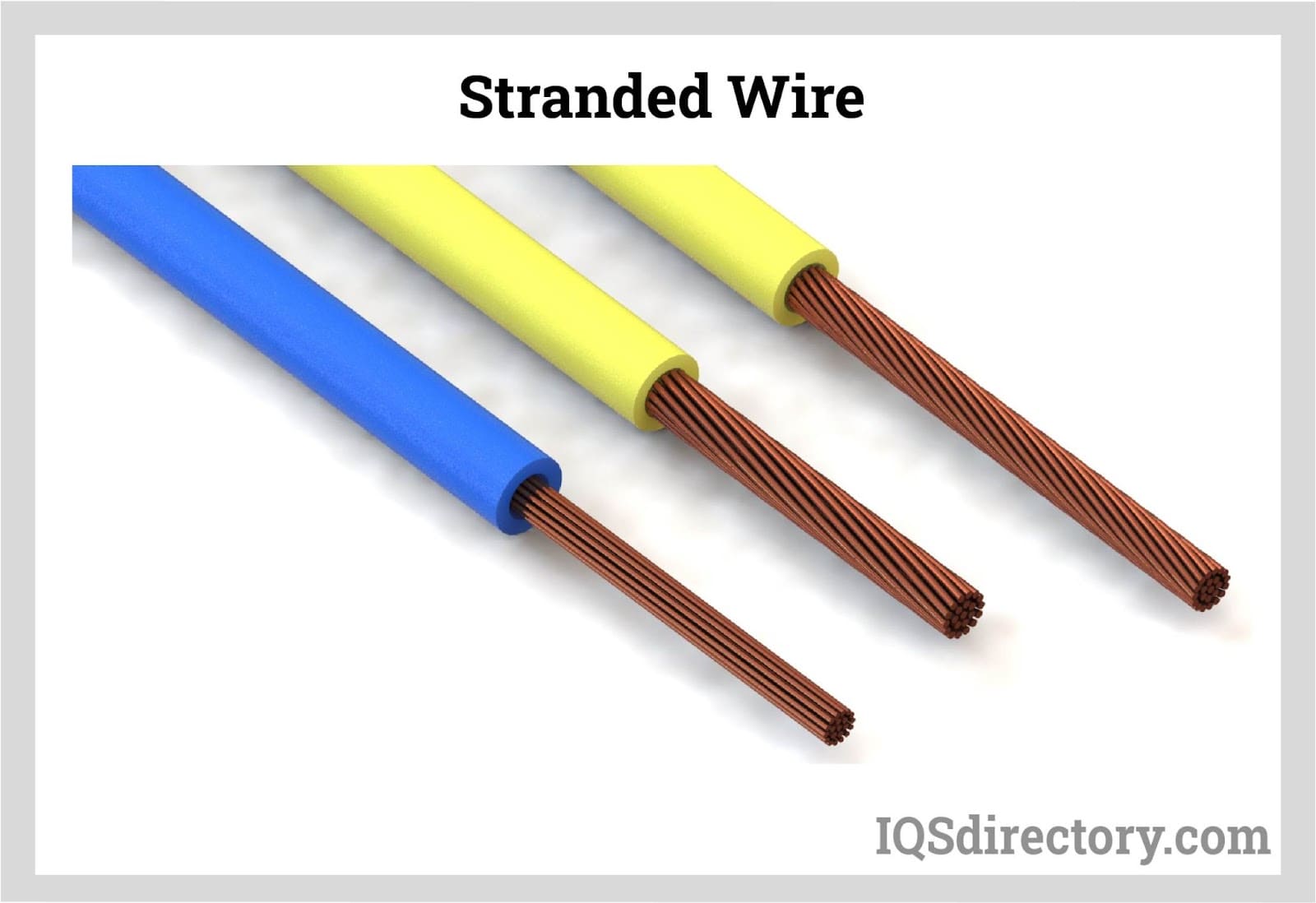
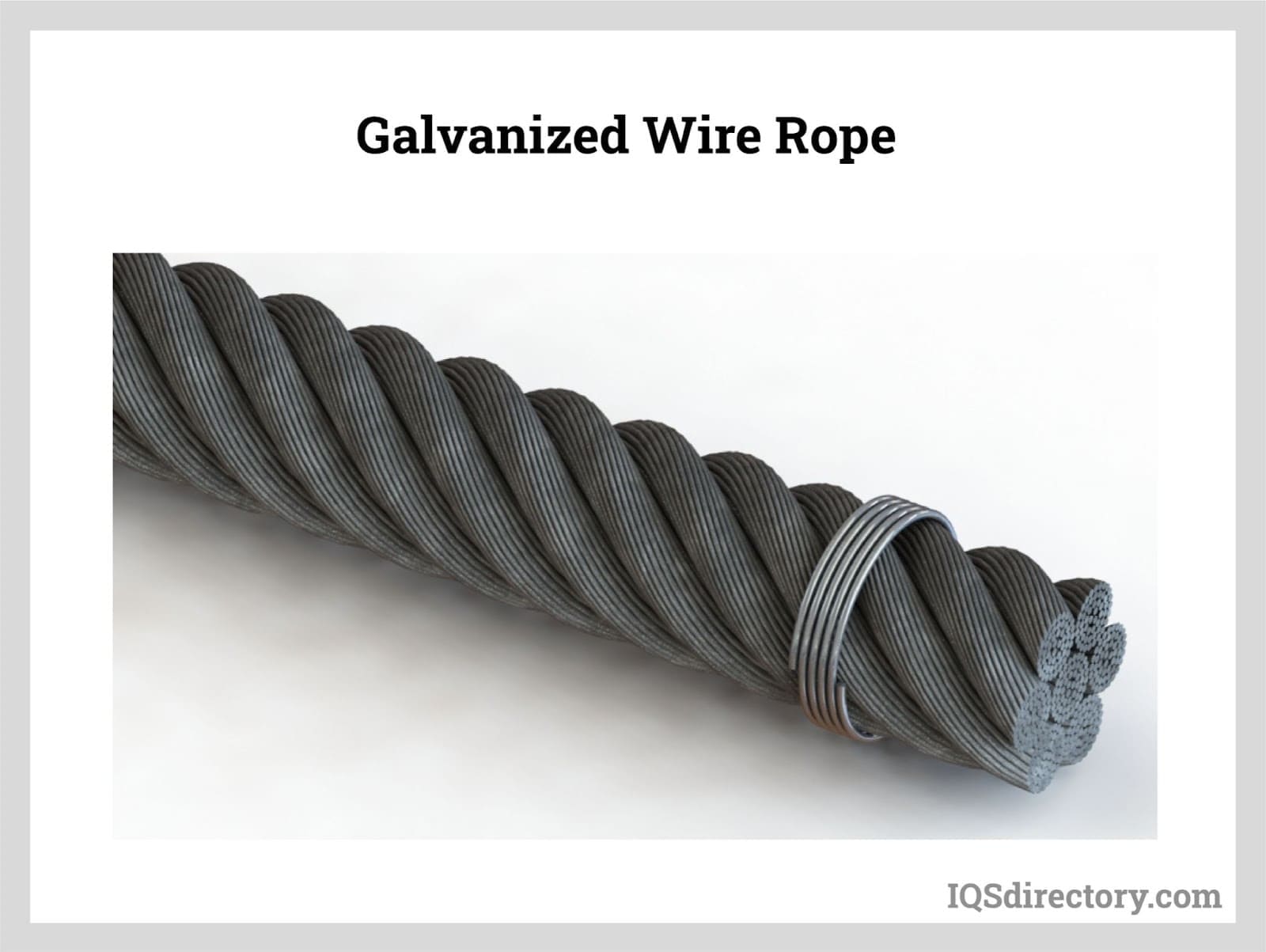

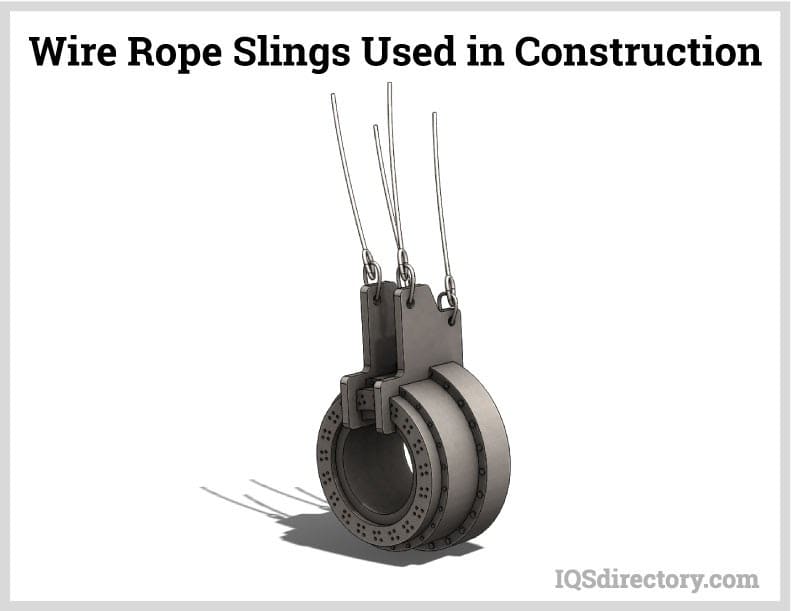
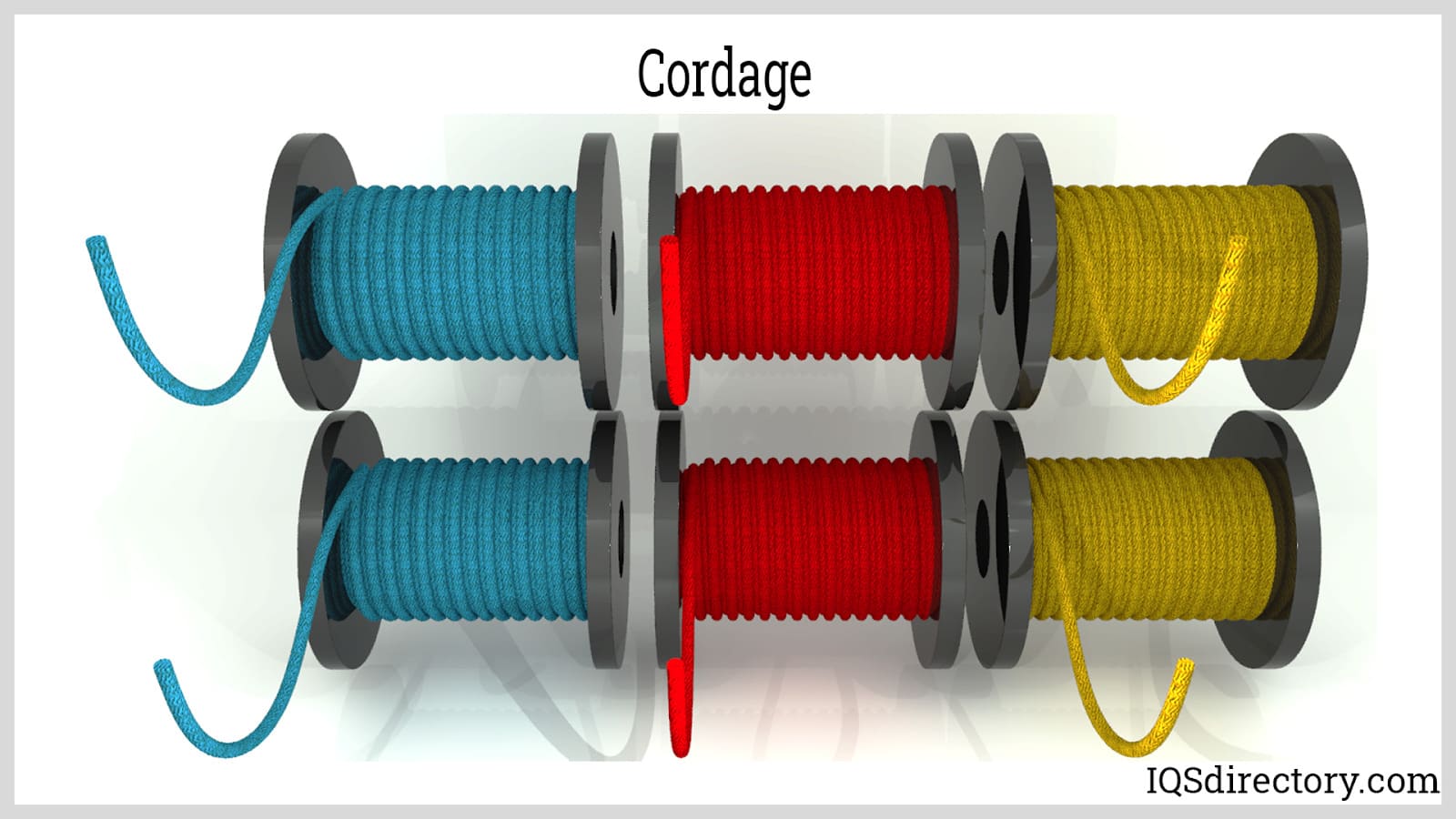
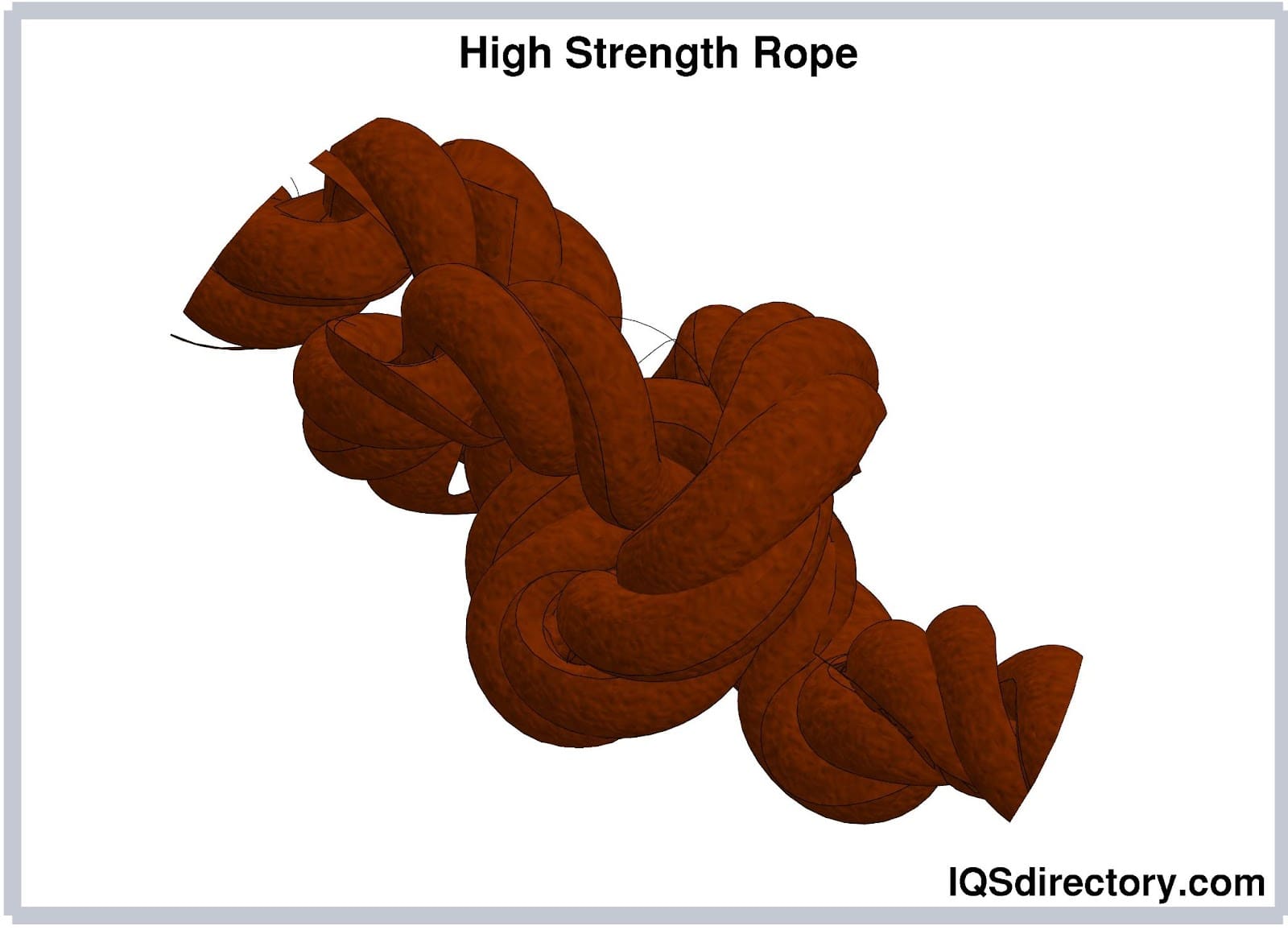
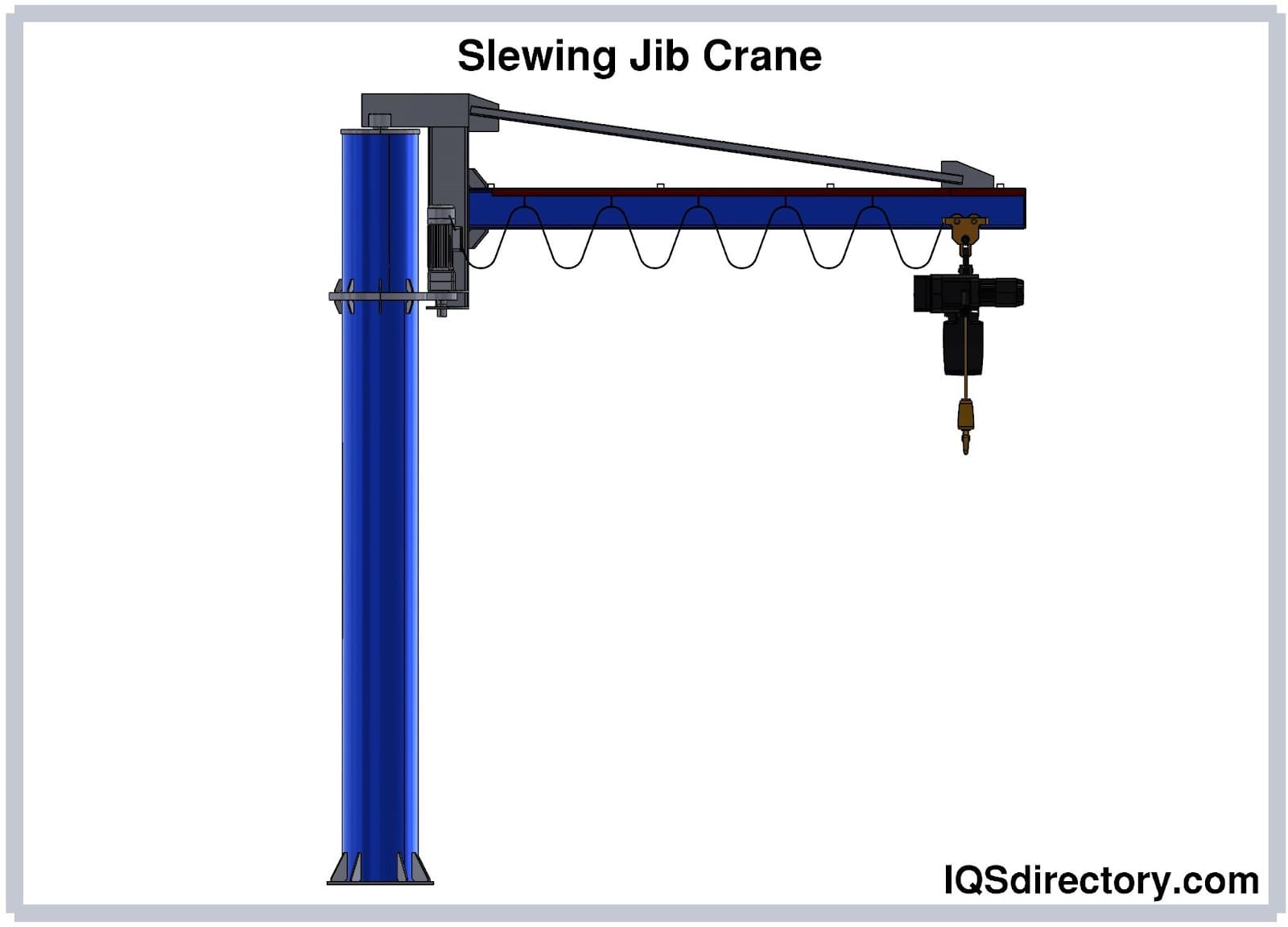
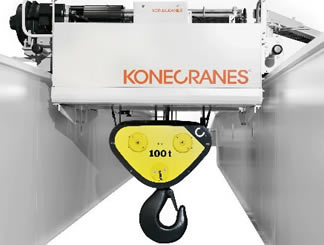 Cranes
Cranes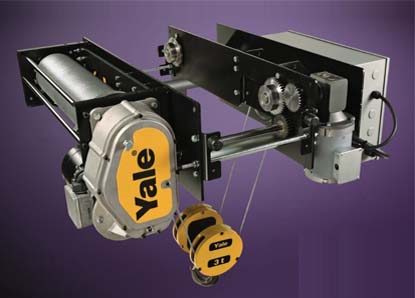 Electric Hoists
Electric Hoists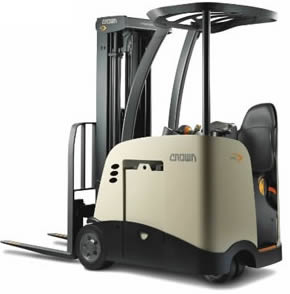 Forklifts
Forklifts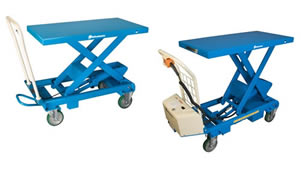 Hydraulic Lifts
Hydraulic Lifts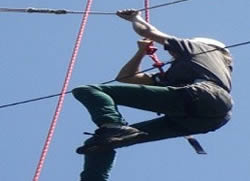 Rope
Rope Wire Rope
Wire Rope Castings & Forgings
Castings & Forgings Bulk Material Handling
Bulk Material Handling Electrical & Electronic Components
Electrical & Electronic Components Flow Instrumentation
Flow Instrumentation Hardware
Hardware Material Handling Equipment
Material Handling Equipment Metal Cutting Services
Metal Cutting Services Metal Forming Services
Metal Forming Services Metal Suppliers
Metal Suppliers Motion Control Products
Motion Control Products Plant & Facility Equipment
Plant & Facility Equipment Plant & Facility Supplies
Plant & Facility Supplies Plastic Molding Processes
Plastic Molding Processes Pumps & Valves
Pumps & Valves Recycling Equipment
Recycling Equipment Rubber Products & Services
Rubber Products & Services